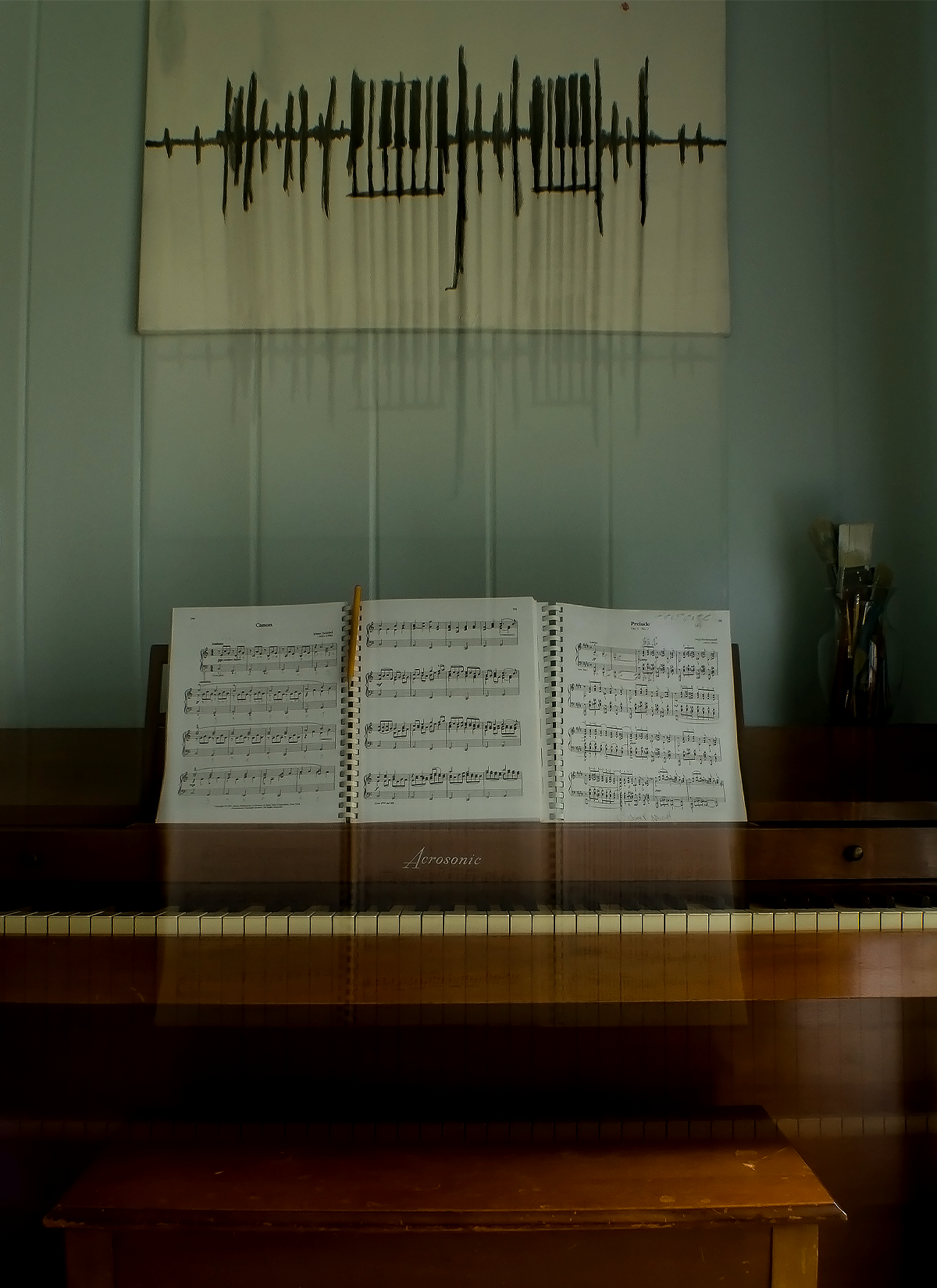C# Minor
The following works are meant to reflect the concept of dissonance, its demand to be resolved to consonance within music theory and the perceived emotion from music. Consonant chords are sounds that are usually found to be pleasant and stable whereas in contrast, dissonant chords tend to be clashing and generally evoke tension. Though the perception of dissonance is more subjective and context-related, it is widely believed to be jarring due to the complex frequency ratio expressed in a chord. Music notes are expressed as frequencies and a simple ratio produces more perfect mathematical ratios understood to be consonant. These concepts have been shown to affect mood and most people recognize dissonance as ‘sad’ or ‘wrong’.
Concert Pitch Standard places Middle C (c4) at 261.63 Hz
C# Minor scale is c# 277.18 Hz, d#311.12 Hz, e 329.63 Hz, f# 369.99 Hz, g#415.30 Hz, a 440 Hz, b 493.88 Hz, c# 554.37 Hz
Liszt
Liszt’s masterwork Hungarian Rhapsody No. 2 was first composed as a piano solo and it’s popularity led to the familiar orchestral arrangement.
I encourage you to listen.
The elusive Key Signature lays claim in only two notable symphonies in the 18th century, it is only slightly more popular among concertos for the piano. Interestingly a number of well known and popular songs played on the radio are written in C# Minor with a vast variety of innate emotion in the songs.
Rachmaninoff
Rachmaninoff grew to dread Prelude in C # Minor (Op. 3 No. 2), his most popular work, due to the frequency in which he played the piece for demanding audiences.
I encourage you to listen.
Common practice among composers prior to the 20th century was to attribute emotional or qualitative characteristics to a key signature. C# Minor was associated with despair and lamentation with overarching grief and penance, some of the most extreme emotions we experience, perhaps because the intervals within the scale complicate the ratios between frequencies.
Chopin
Chopin favored the scale often, though his most notable work was only published after his death; Nocturne No. 20 in C-sharp minor, Op. posth.
I encourage you to listen.
Rachmaninoff and Liszt were more extroverted in their music with use of dissonance and suspended harmony. Whereas Chopin was nuanced and his compositions entrenched in standard harmony and progression. Beethoven, being the earliest of these composers and master of music theory, oversaw the transition from classical to romantic with Moonlight Sonata bridging the gap between the two. All of these composers pieces in C# Minor can bring you to your knees and make you weep over nothing but sound.
Beethoven
A most recognizable work of Beethoven may be responsible for the scale’s modest popularity in piano literature; Moonlight Sonata (Piano Sonata No.14).
I encourage you to listen to all three movements.




